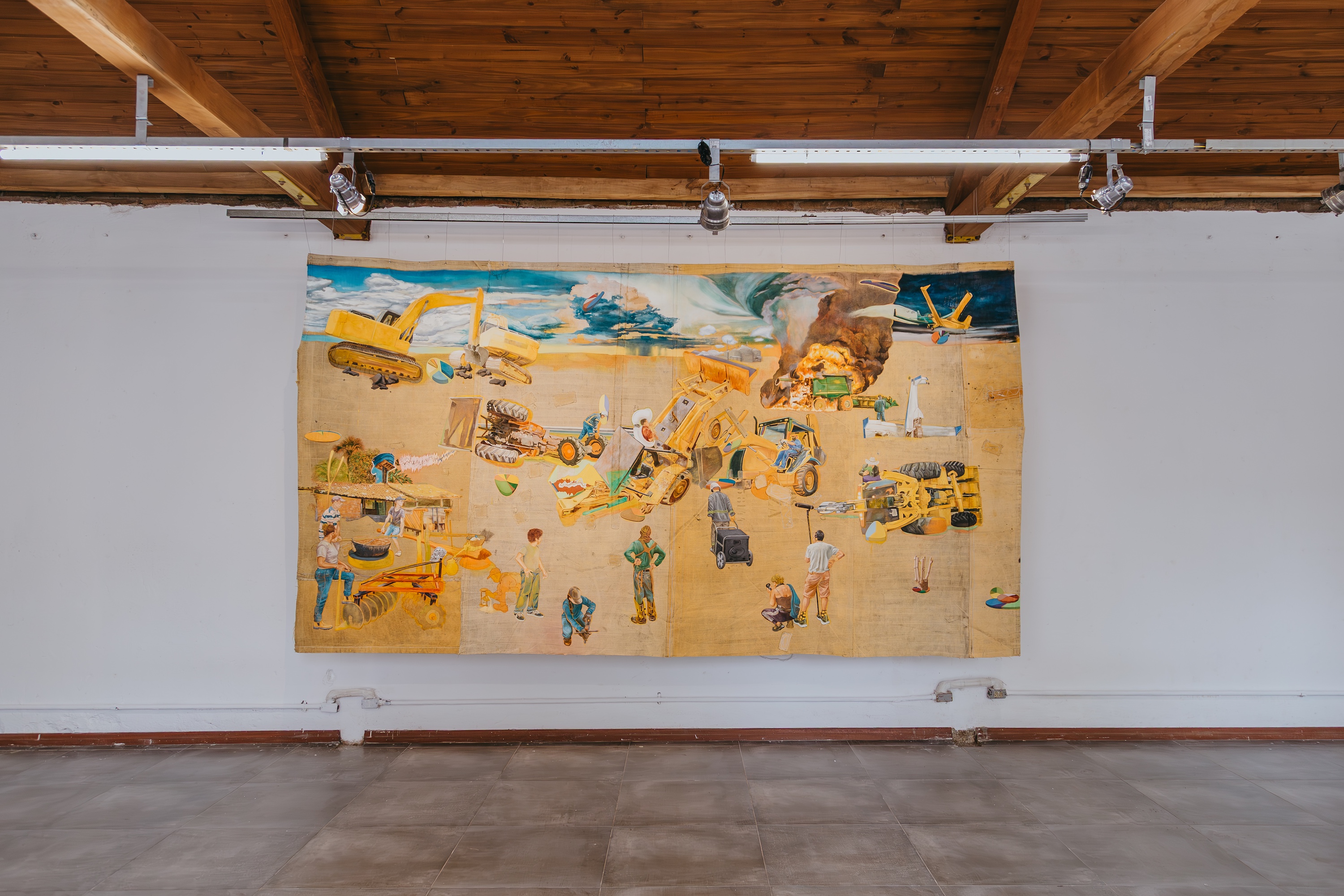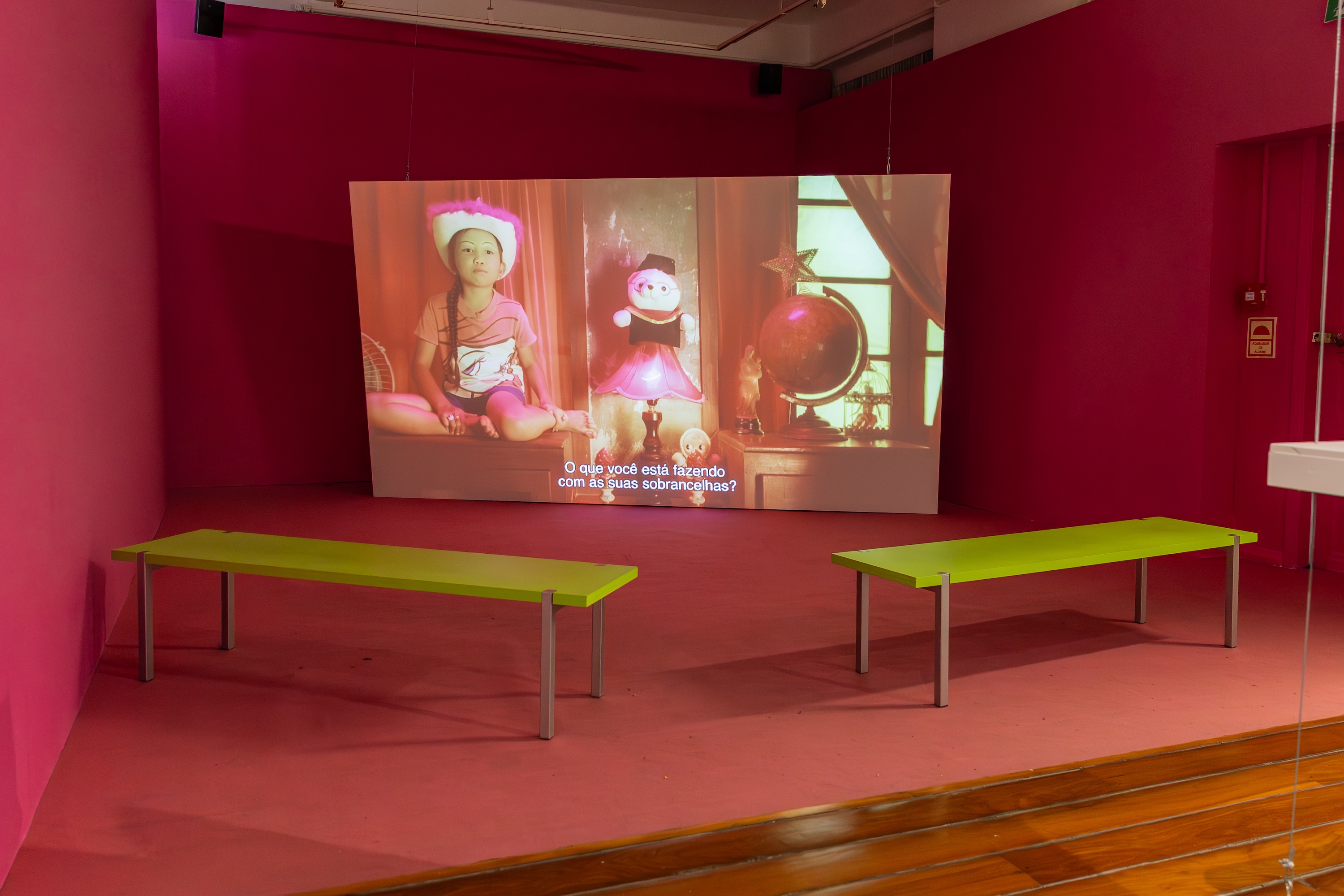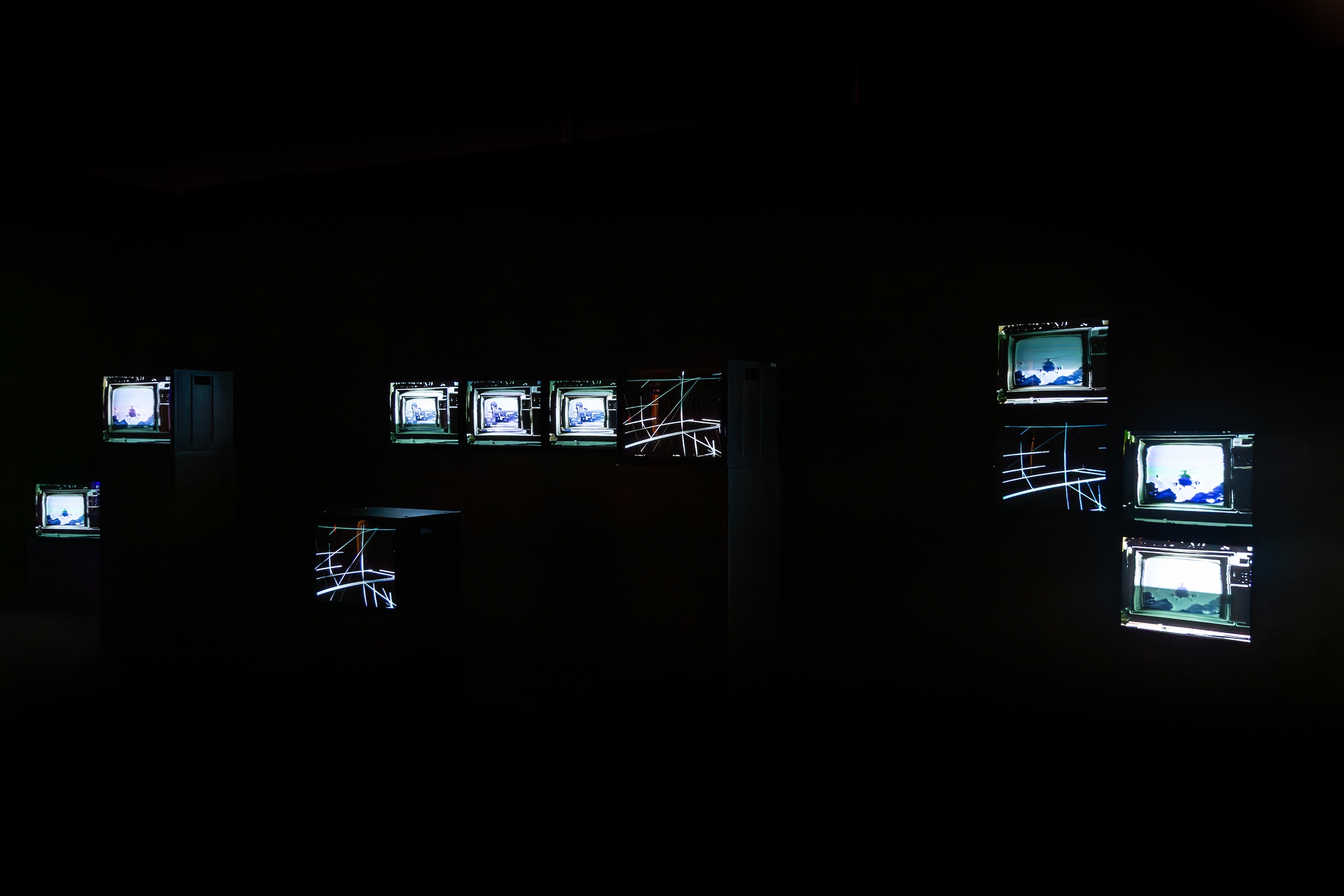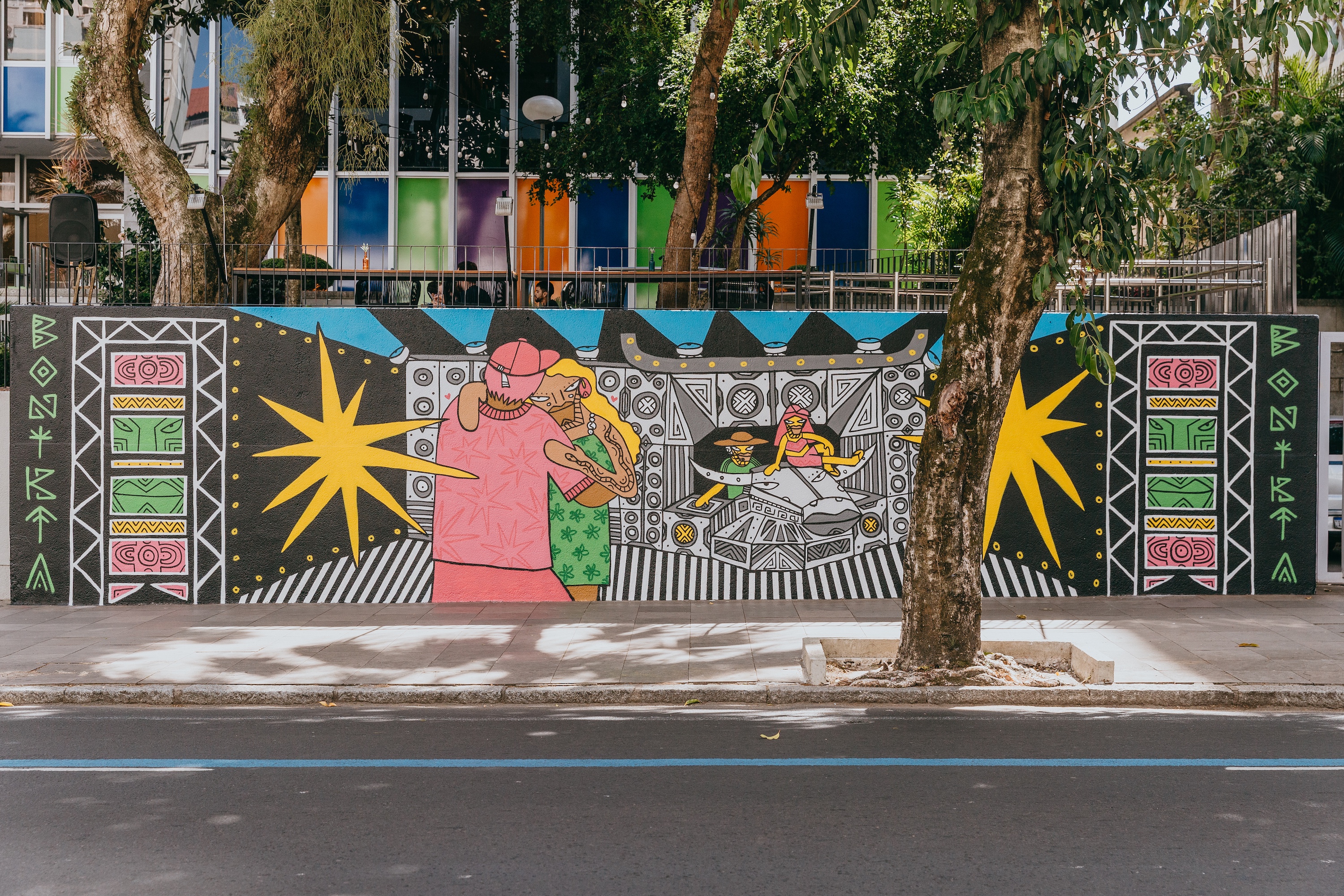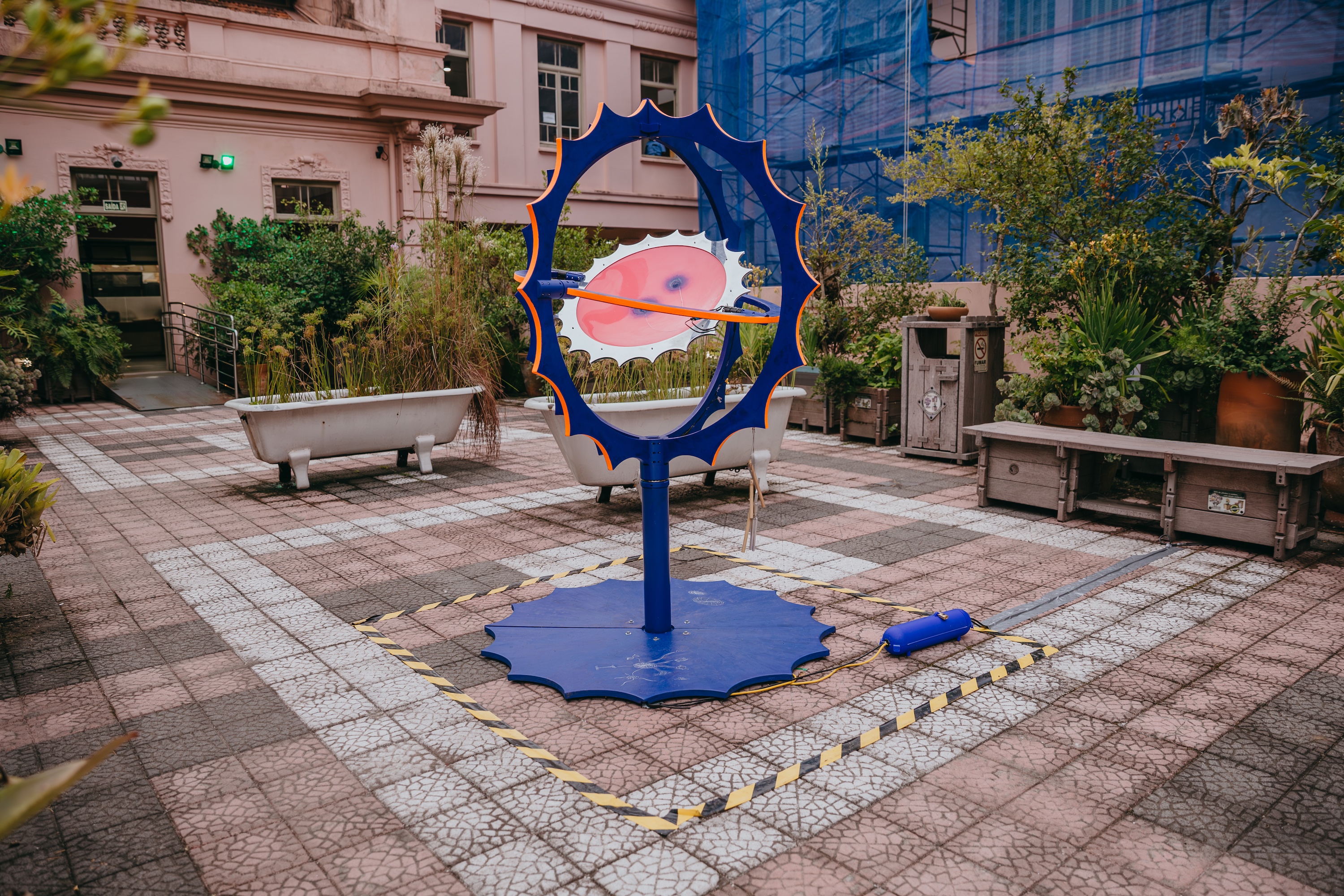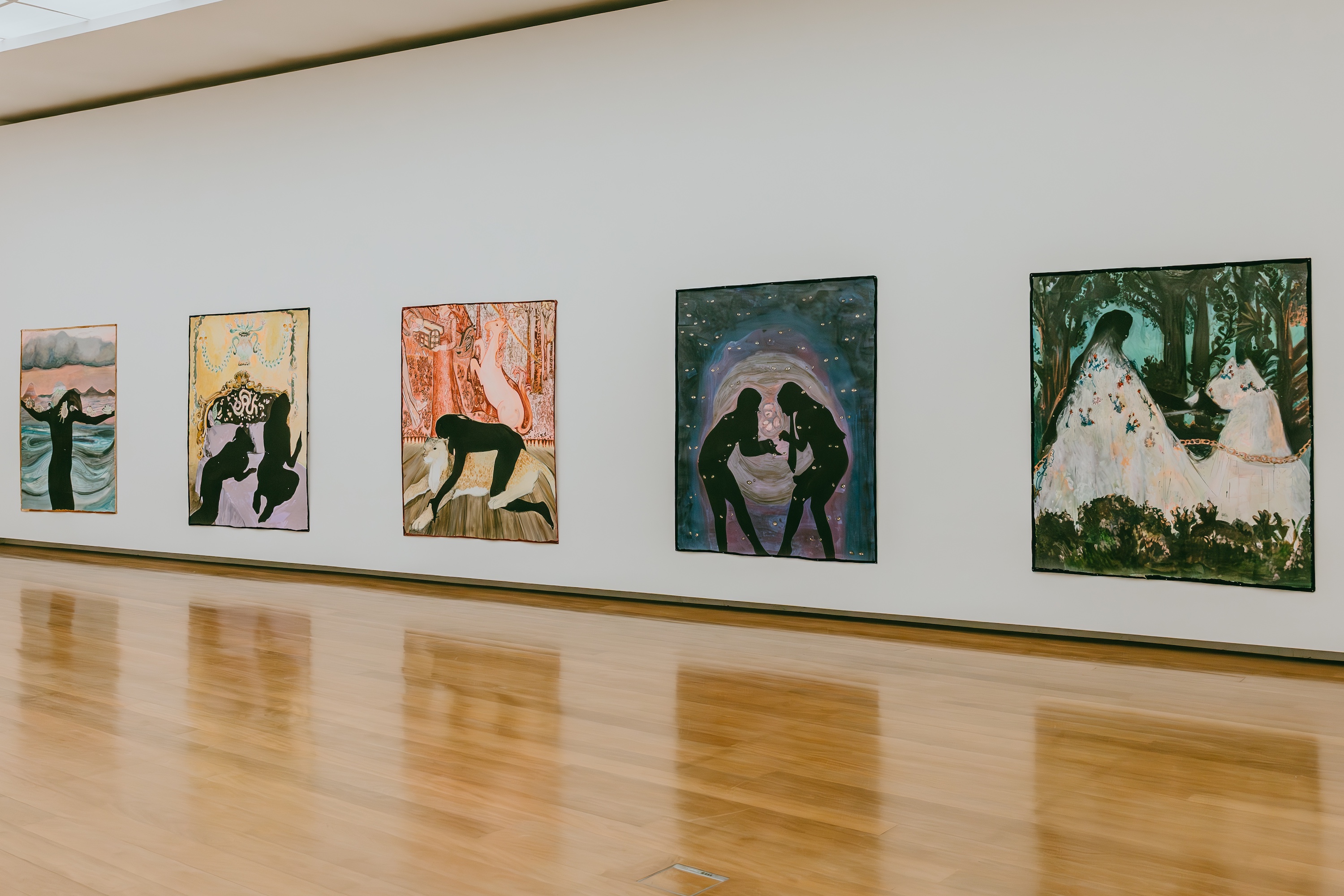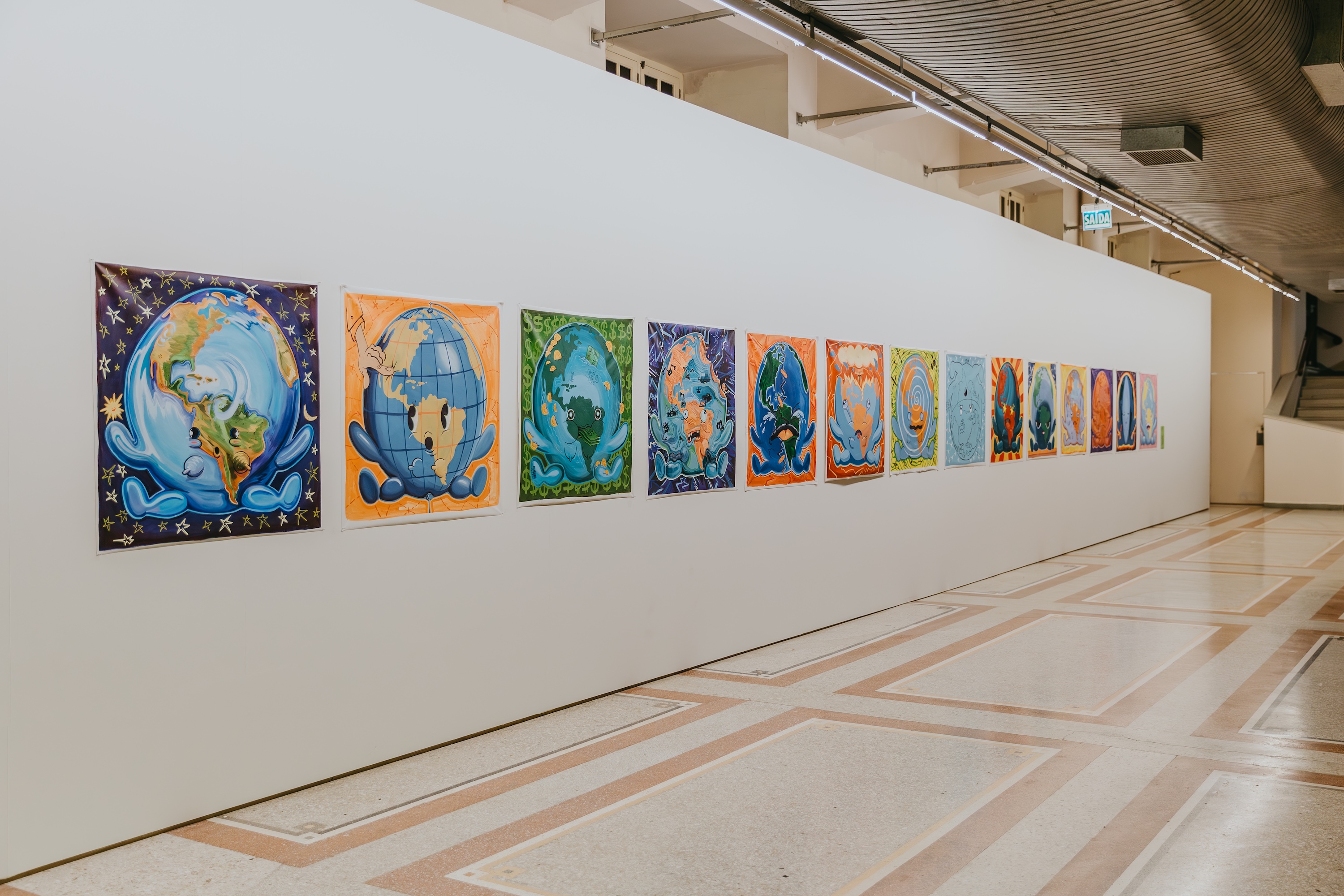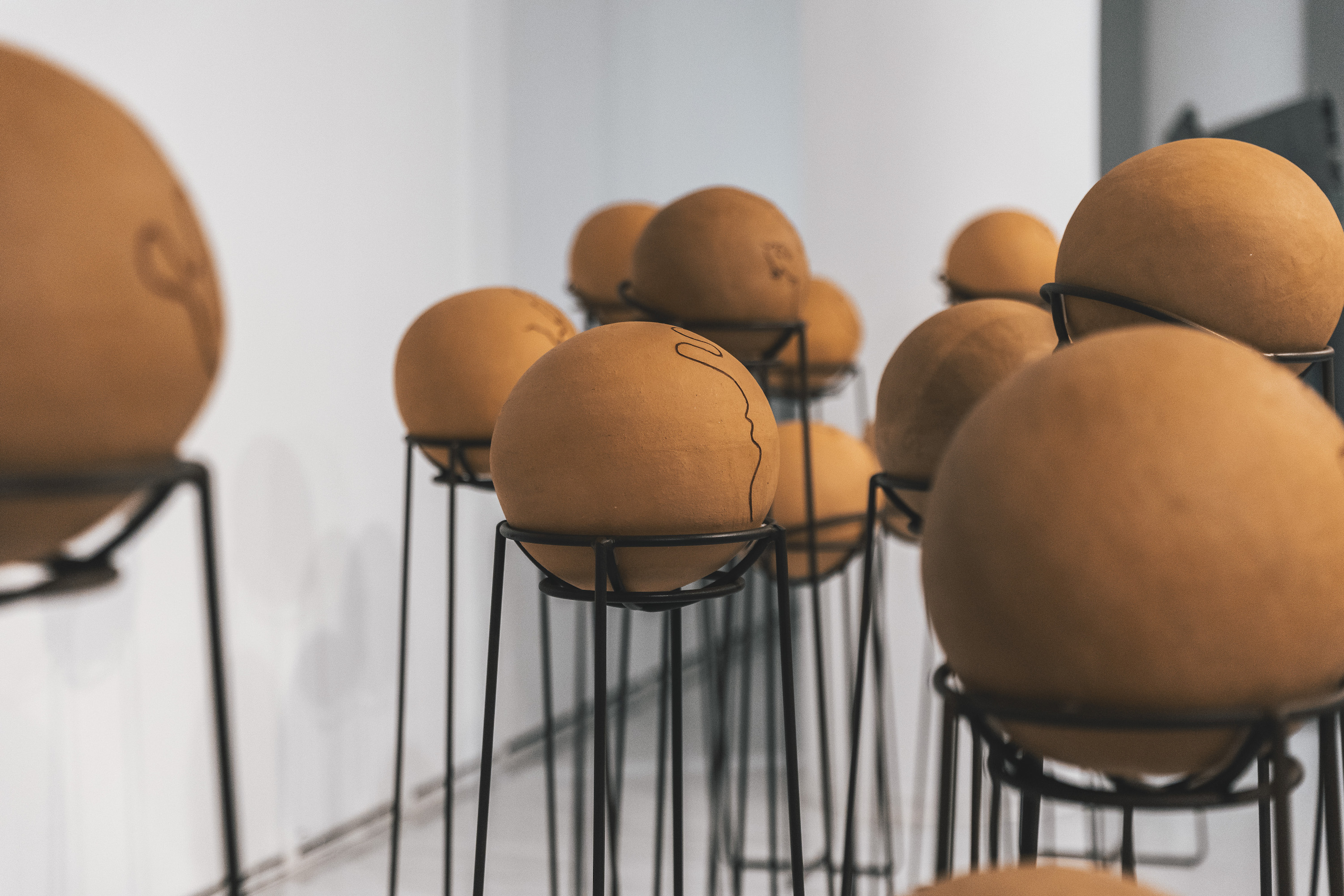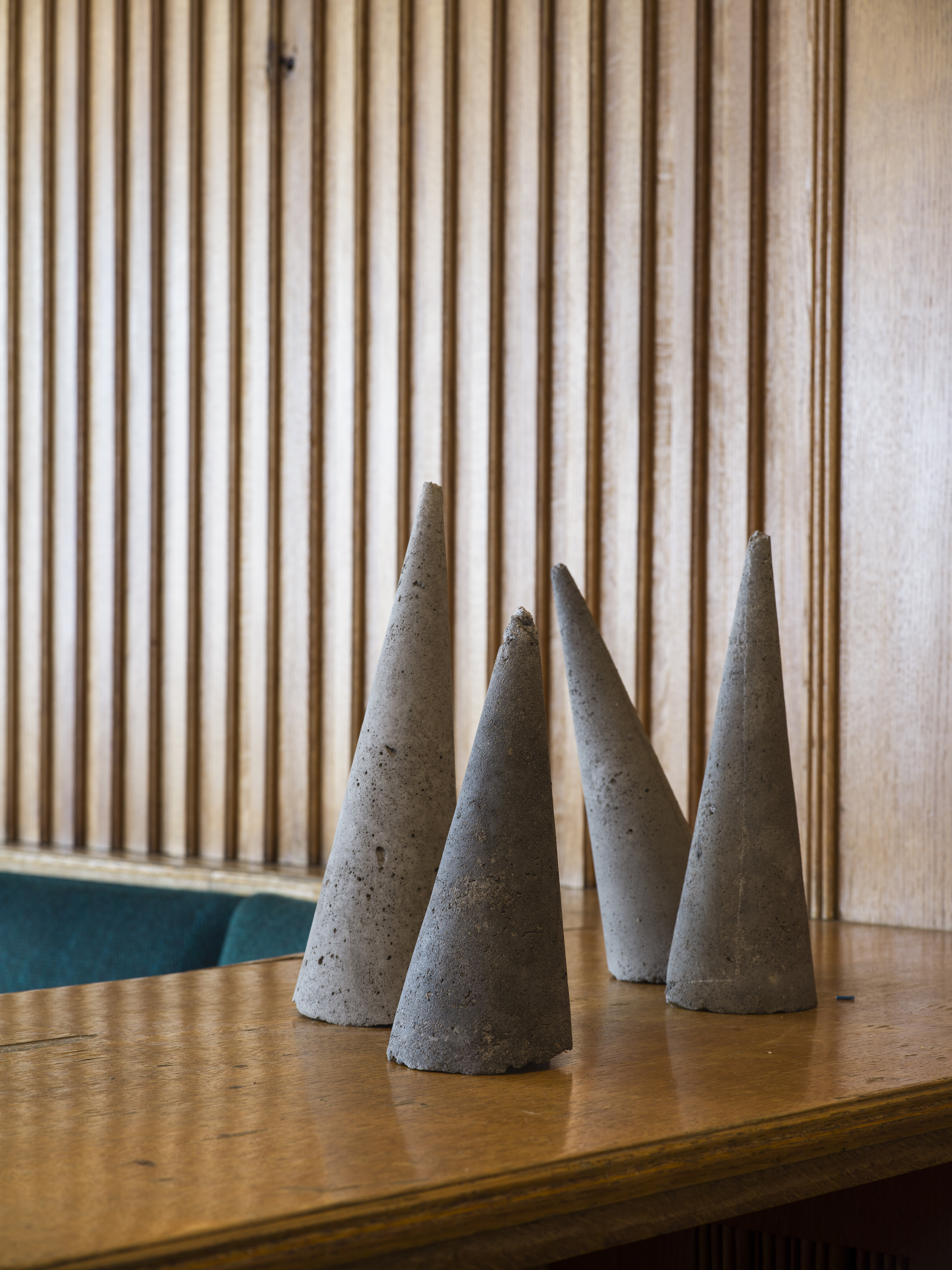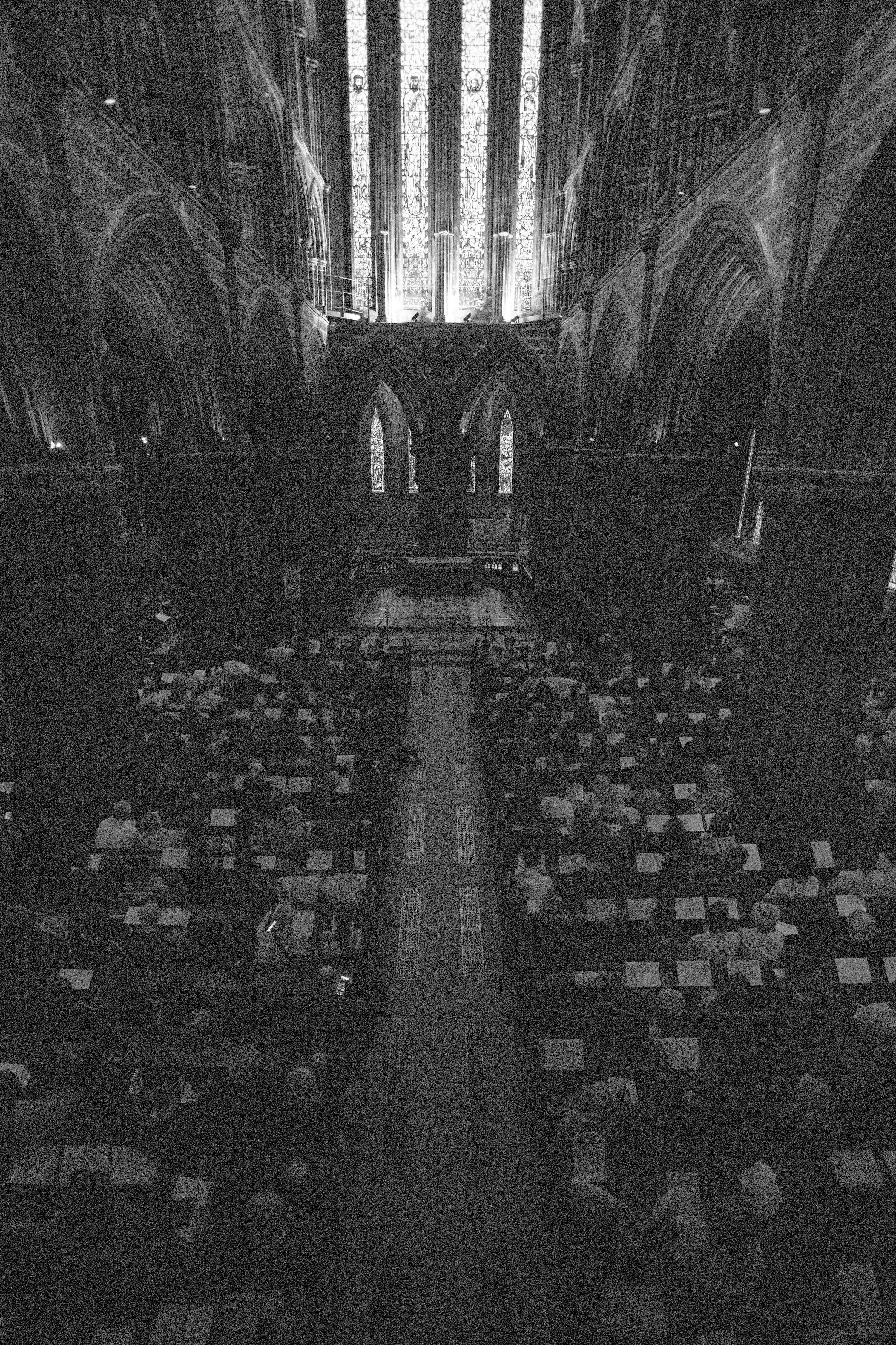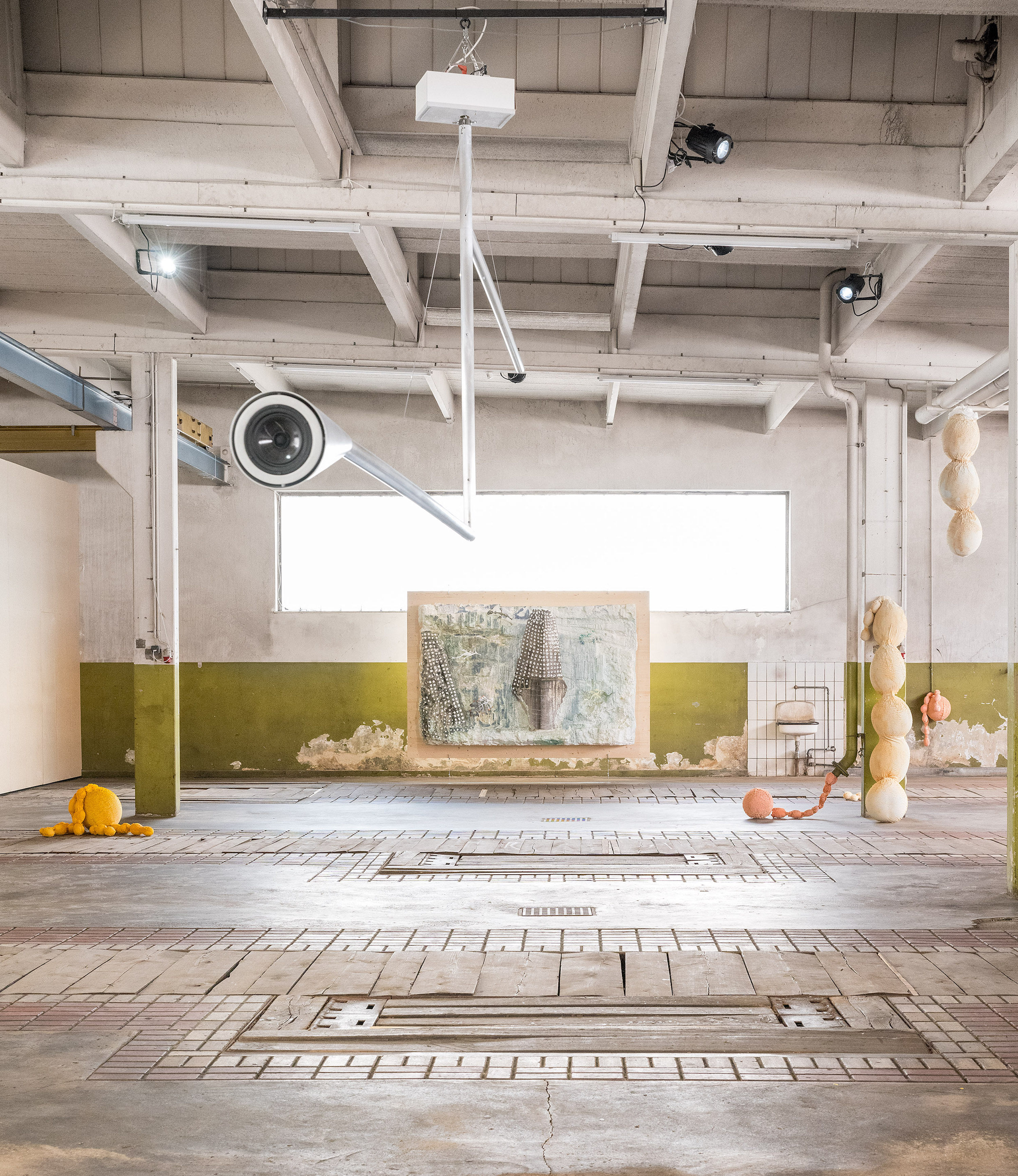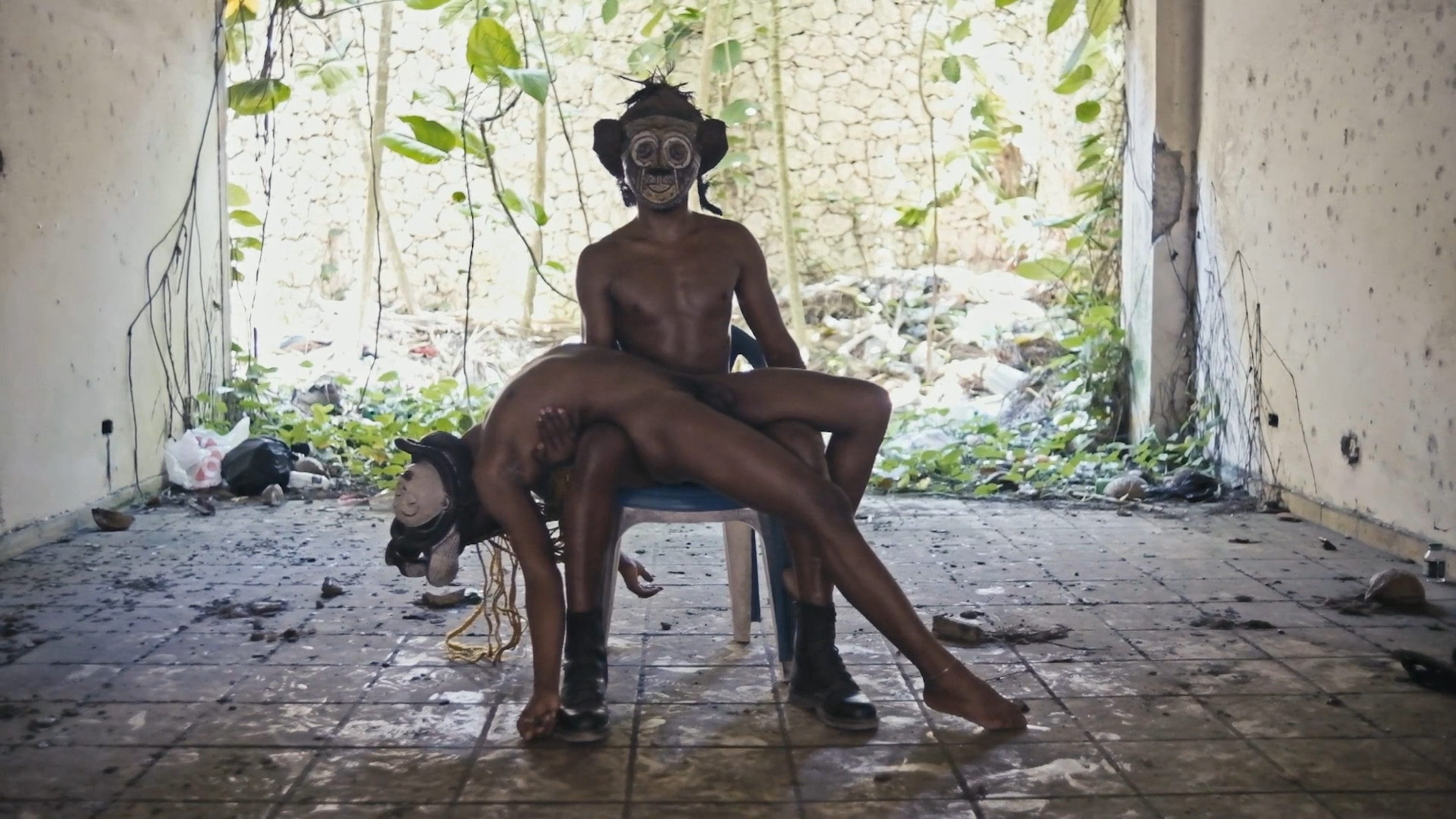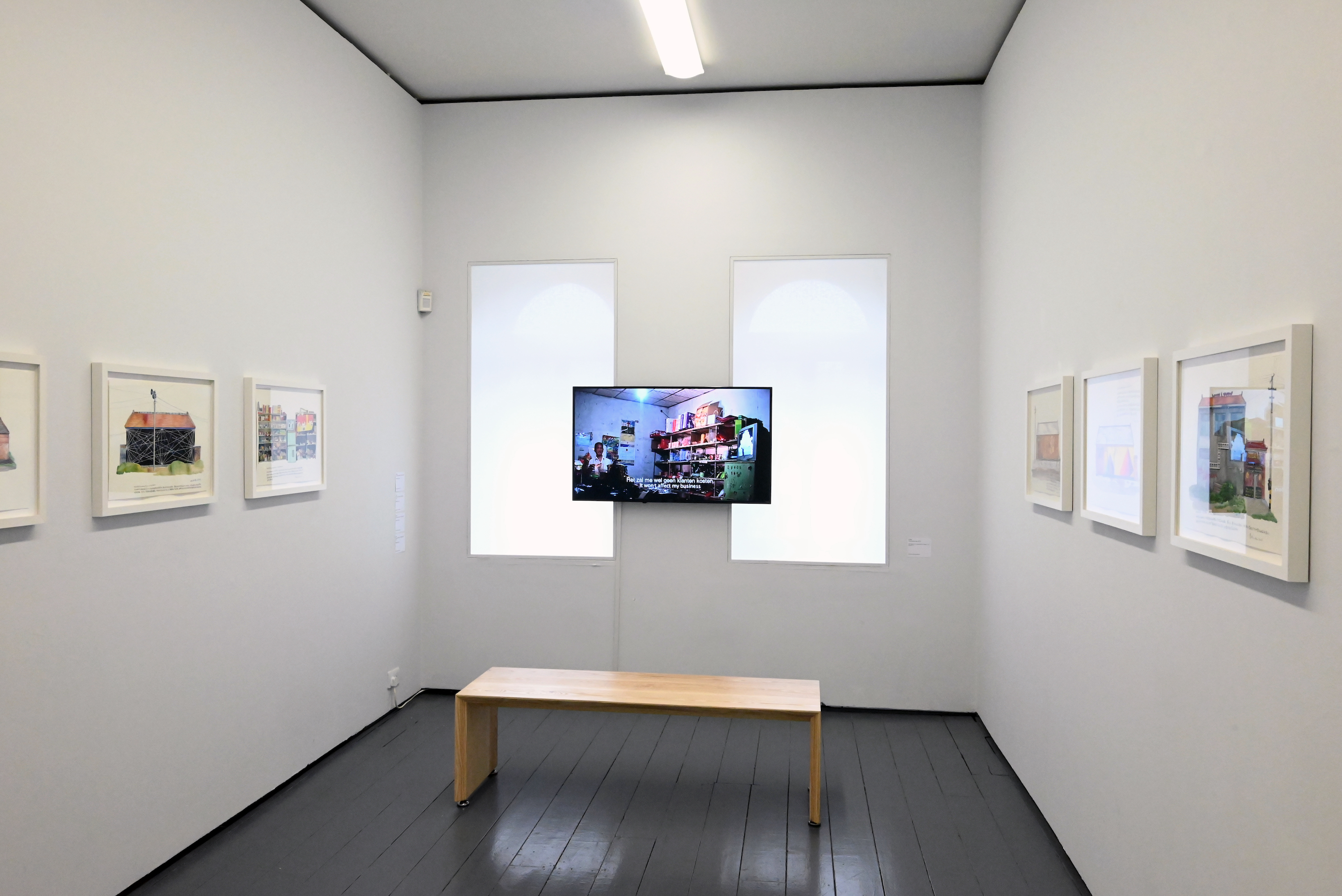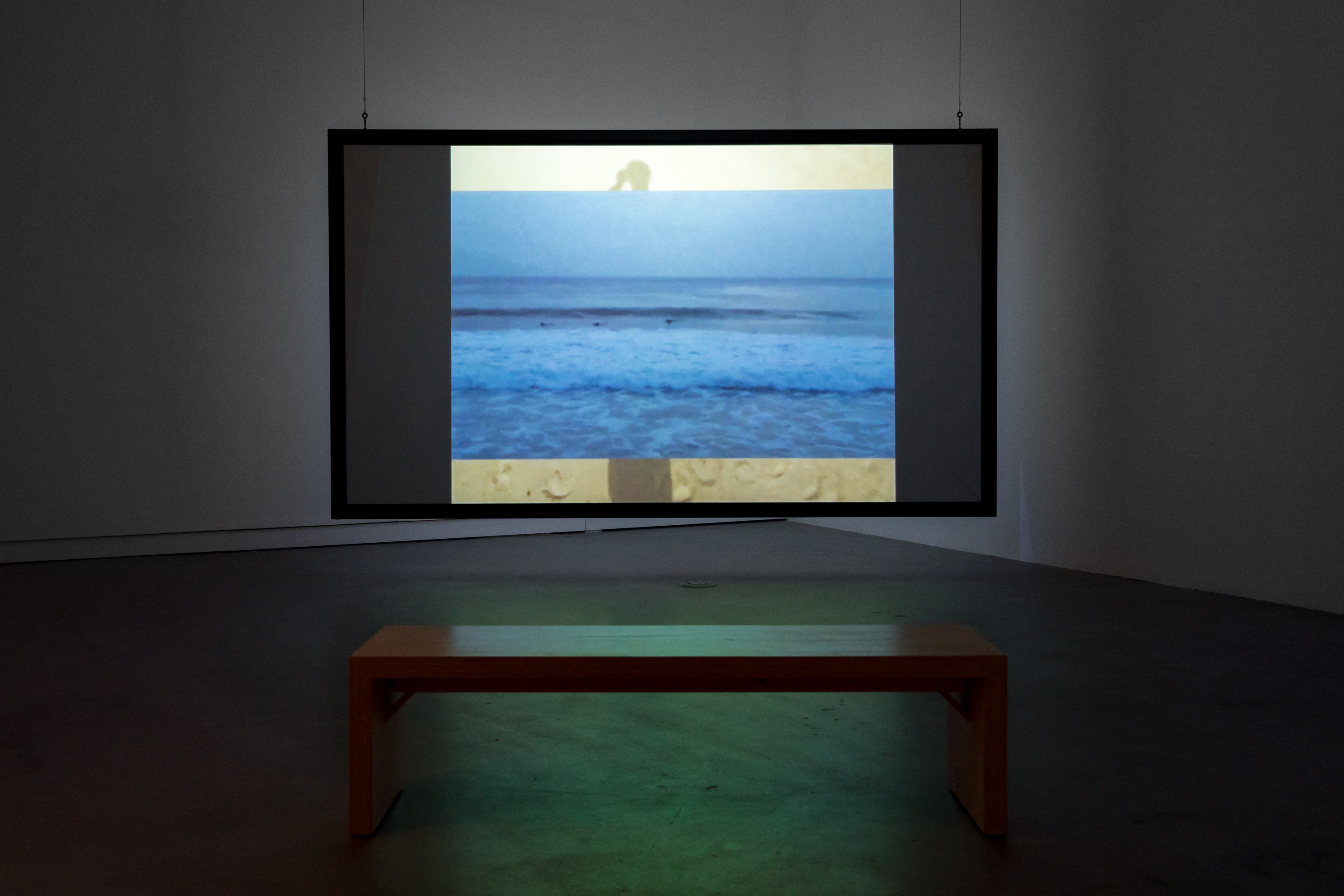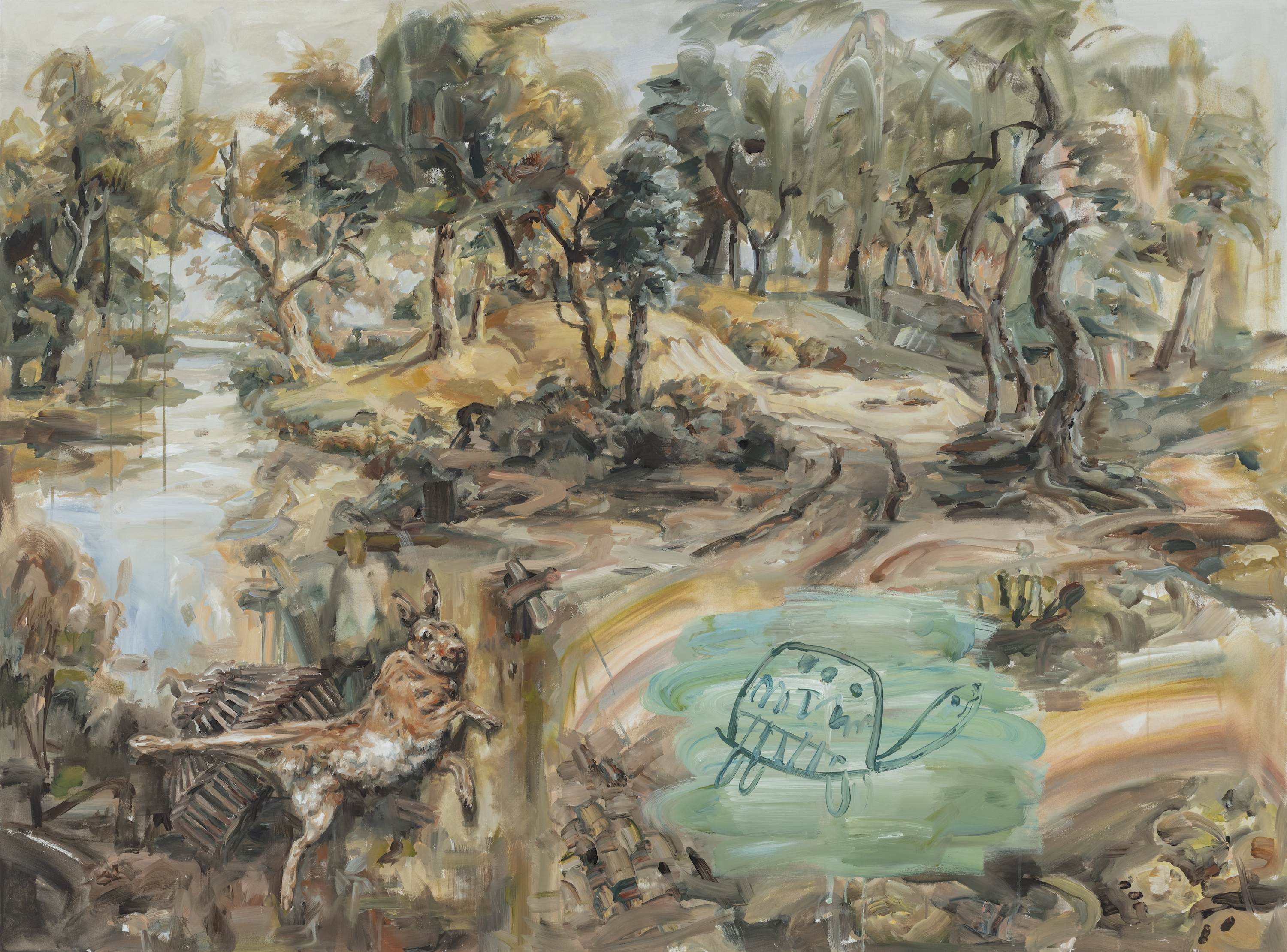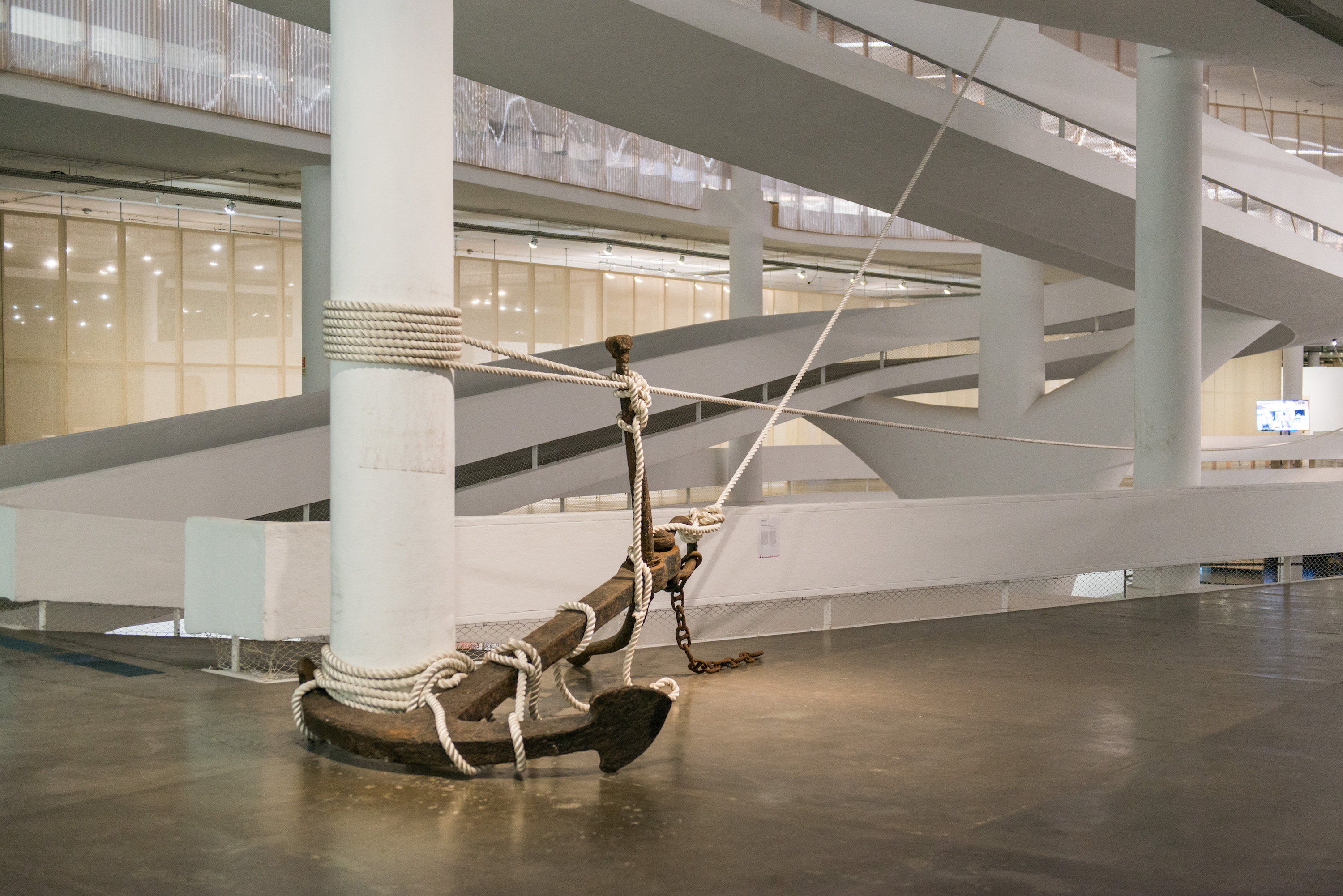March 27–June 1, 2025
There’s a peculiar clock on the façade of the Museu del Trabalho. Instead of numbers, it displays ten letters that spell the word “pastime” in Portuguese. Passatempo (2018), by Rochelle Costi, who began her career here in Porto Alegre, embodies the essence of the 14th Mercosur Biennial under the chief curatorship of Raphael Fonseca: it amuses, but it doesn’t delve deeply.
First held in 1996, the 14th Bienal do Mercosul was originally scheduled to open last year, but was postponed after flooding in the southern Brazilian state of Rio Grande do Sul. It is not a centralized biennial, either conceptually or physically. Rather, it’s an exhibition of exhibitions in which each venue develops its own curatorial sub-concept, with its own title and twists and turns, making for a highly complex viewing experience.
This is especially true of venues that feature a single work, such as Vila Flores Cultural Center (A Prodigious Solution To A Noisy Problem, a painting of a scene in a field where farm machinery explodes while a character plays a tuba, by Felipe Rezende) or the Goethe-Institut (In the Beat Of This Sound, You’ve Got Me On, a mural that depicts a DJ set at a party, by Bonikta). There are entertaining moments, for those in the mood. Visitors can push a wheel connected to musical instruments which are trigged through the movement, as in Chico Machado’s Obra circular; sing karaoke or dance under a disco ball, as in Fátima Rodrigo’s installations (Karaokê [from the Fantasía series], Dancefloor 1 and 2); or blow into a membrane that translates ambient vibrations into sounds, with Nicole L’Huillier’s Brújula. These activatable works—all new commissions dated 2025—beg a question: what is on offer for visitors who aspire to something more?
Those looking to the curatorial concept, so vague that it may lead to confusion, might be in for disappointment. “Estalo” translates as snap, a click of the fingers or a brief moment in time. This apparently modest metaphor encompasses so many references as to empty it of meaning: acts of resistance, the fight against “drastic ecological changes,” the human and the “more than human,” the subaltern, or the transformation from one state to another. Added to the above are other issues directly addressed by the artists, including anti-colonialism, racism, religious syncretism, migration, queerness, activism, and software license abuse, along with lots of fantasy.
To focus on individual artworks, on their own terms, undoubtedly makes for a more rewarding experience. The best of these pieces is concentrated in three of the larger venues: Farol Santander, MARGS, and Fundação Iberê Camargo. The Farol showcases Marina Rheingantz’s vibrant, large-format abstract oil paintings. Nam June Paik’s Global Groove (1973) visualizes the cultural clash between content and medium, an electronic collage in which the experimental treatment of the image is juxtaposed with appearances by avant-garde figures such as John Cage, Merce Cunningham, Allen Ginsberg, or members of the Living Theatre.
A similar effect is achieved with Gretchen Bender’s Dumping Core (1984), at the MARGS headquarters. Thirteen video monitors here compose a symphony of images, combining the animated corporate idents of major news channels with visions of war or famine and industrial music, that reflect on the anesthetic power of television networks. Other highlights include Rodrigo Cass’s installations and paintings, in which form, color, and narrative interplay, Venuca Evanán’s eroticized and updated pre-Columbian Sarhua panels, and Leticia Lopes’s paintings of shadowy silhouettes in disturbing or surreal scenes, dreamlike landscapes inhabited by invented animals, as disturbing as they are captivating.
This is a young biennial: more than half of its seventy-seven participants were born after 1980. It makes for a great opportunity to discover new artists, showcasing how they incorporate glitch and pixel aesthetics, video games, and fluorescent colors into their work. But it also exposes more fanciful pieces that, while addressing real-world issues, are marked by solipsism and nostalgia for childhood.
That is the case in Randolpho Lamonier’s remodeling of a large room at the MAC-RS into his childhood home, including elements from pop culture and handwritten adolescent diary entries on the walls, in which he mixes references to the fragile state of our planet with the revelation that when he was little he wanted to be a ninja in a secret society. In Eduardo Montelli’s Plasticidade Redutiva (2010–25), footage of the artist repeatedly performing absurd actions appears as a series of GIFs, reproduced with a glitch effect on twelve screens, multiplying the emptiness of the advertising of self on social networks. In Vitória Cribb’s video Echoes of a Wet Finger (2024–25), the human turns into a wandering insect that inhabits a domestic space from which it appears estranged.
A number of works take the viewer to other dimensions, often housed within the artists’ whimsical concoctions. In Natasha Tontey’s video Garden Amidst the Flame (2022), animated beings help the teenaged protagonist become a warrior. Urmeer presents cartoonish paintings, depicting planets affected by real-world problems, that resemble the trademarks of NGOs for children. The risk of treating real-world issues—like a flood severe enough to postpone an art biennial—in candid yet frivolous ways is that it does not encourage much reflection or engagement in the viewer. If the aim is to raise awareness about the disturbing reality in which we live, then perhaps we should do so with less earnest escapism.
